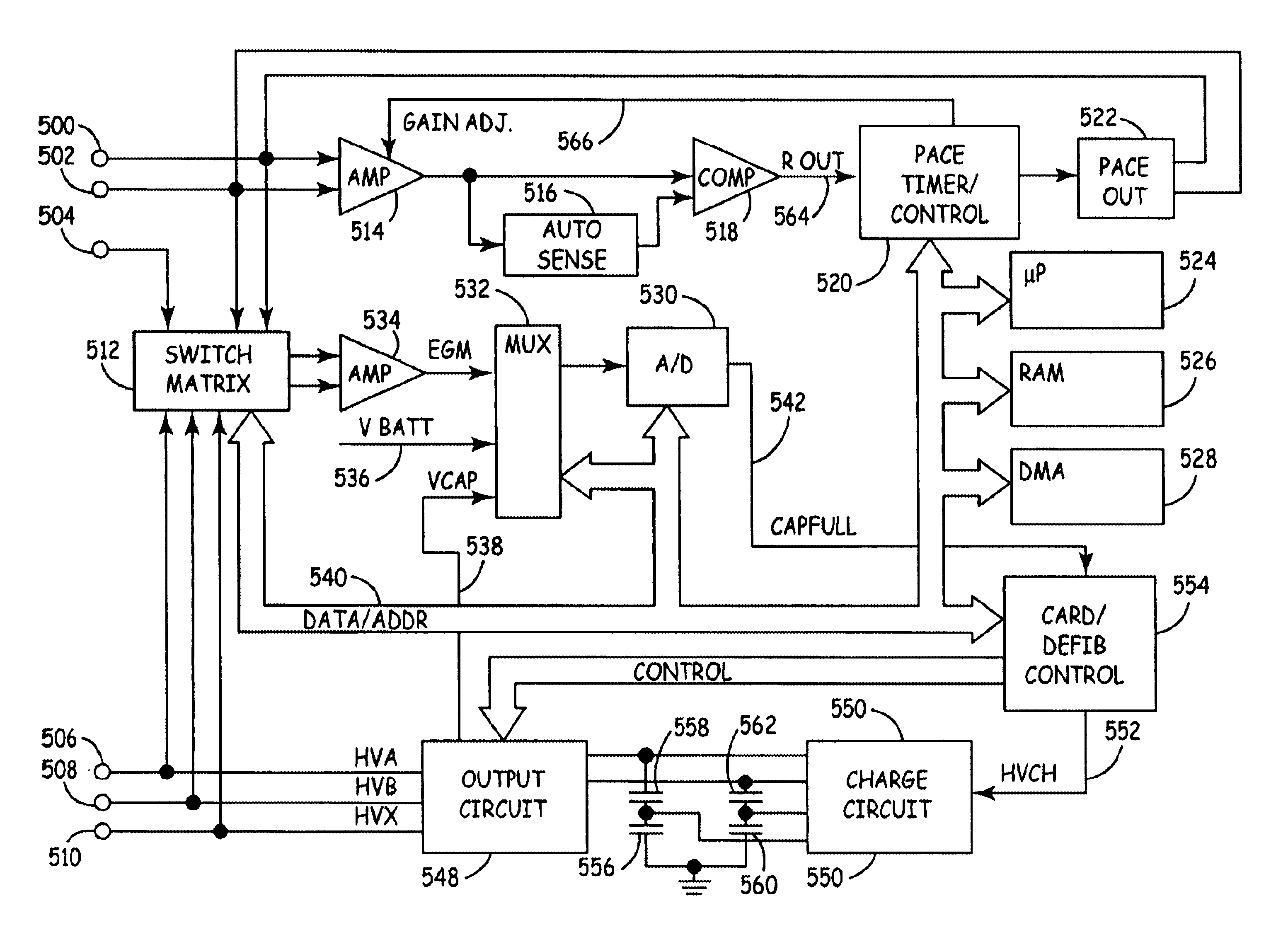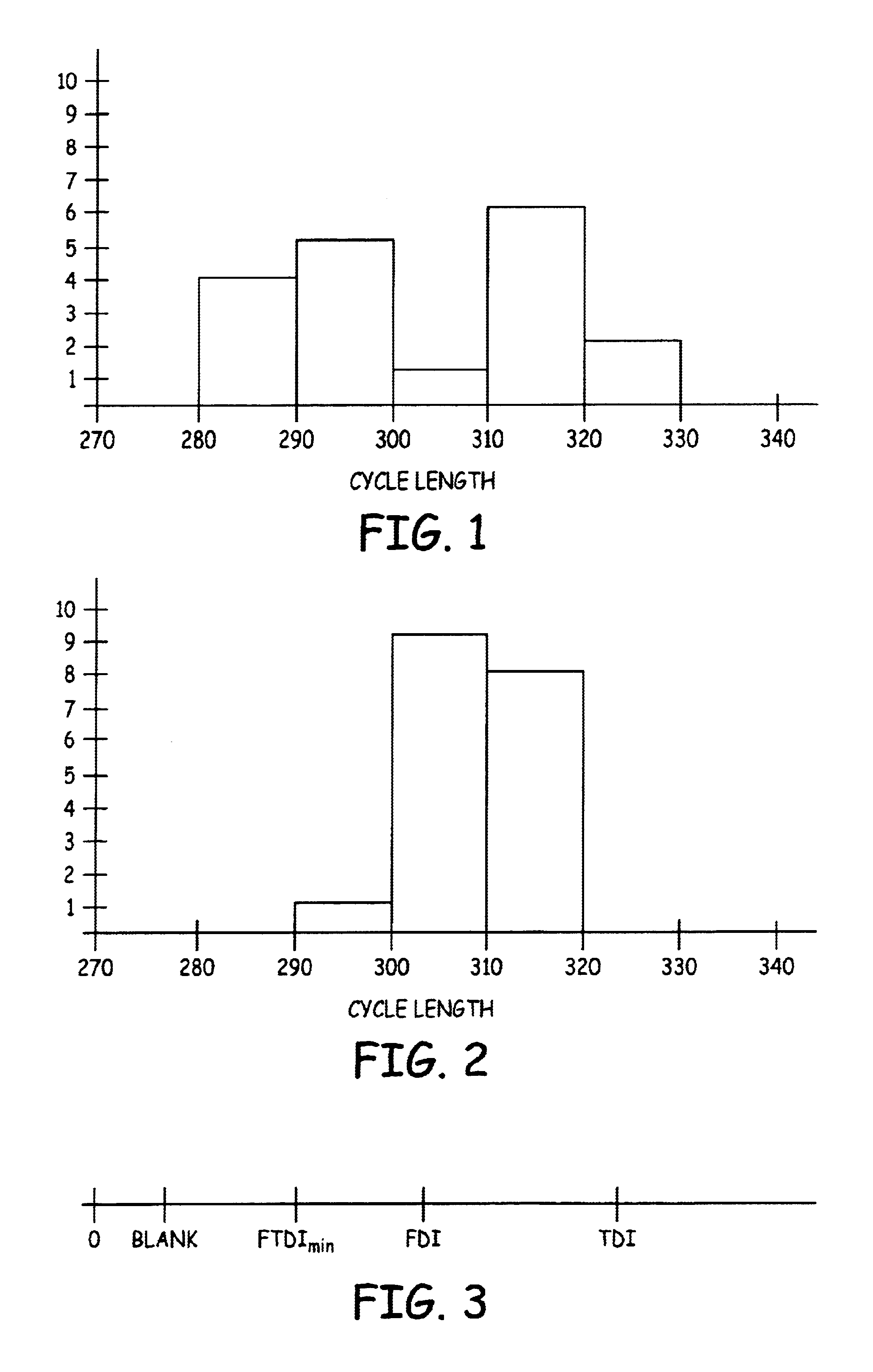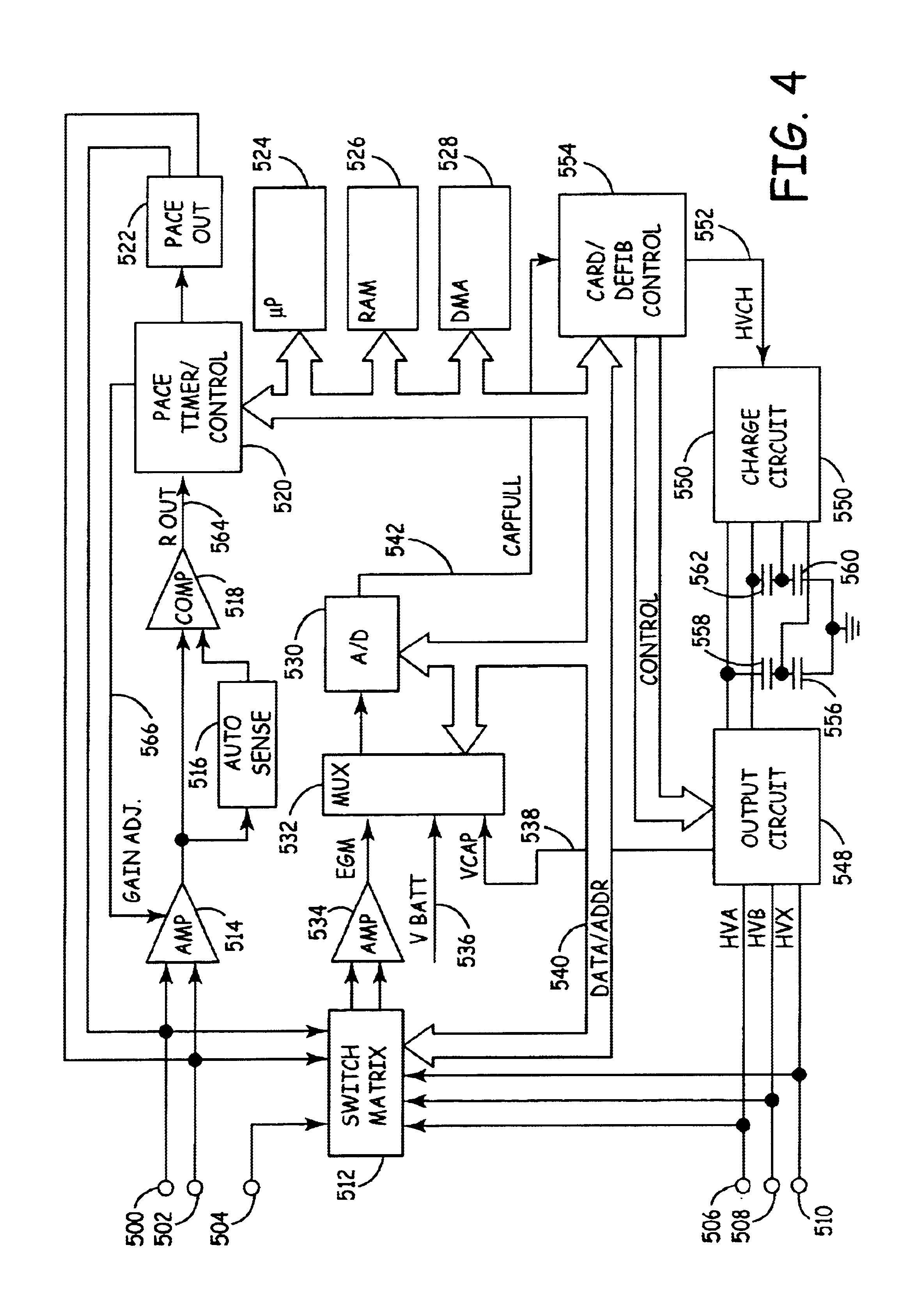Method and apparatus for detection and treatment of tachycardia and fibrillation
a technology of tachycardia and fibrillation, applied in the direction of therapy, heart stimulator, heart defibrillator, etc., can solve the problem of difficult to distinguish high-rate tachycardia from low-rate fibrillation, and achieve the effect of accurate delivery of anti-arrhythmia therapies
- Summary
- Abstract
- Description
- Claims
- Application Information
AI Technical Summary
Benefits of technology
Problems solved by technology
Method used
Image
Examples
first embodiment
In the context of the present invention, it is suggested that this discrimination function is applied in response to a provisional detection of ventricular fibrillation. The interval ranges, the numbers of bins, the numbers of intervals and the other parameters of the discriminator function may be programmable by the physician. For example, binned intervals may range from a minimum of 120 to 240 milliseconds to a maximum of 350-400 milliseconds. Alternatively, the value of the maximum interval for tachycardia detection (eg. TDI) may serve as the maximum binned interval.
In the first embodiment disclosed below, the discrimination function is activated in response to detection of a rhythm which could be either ventricular fibrillation or fast ventricular tachycardia. The particular embodiment disclosed accomplishes this provisional detection function, using a modified version of the detection methodology implemented in the Medtronic implantable pacemaker / cardioverter / defibrillators. Ho...
PUM
 Login to View More
Login to View More Abstract
Description
Claims
Application Information
 Login to View More
Login to View More - R&D
- Intellectual Property
- Life Sciences
- Materials
- Tech Scout
- Unparalleled Data Quality
- Higher Quality Content
- 60% Fewer Hallucinations
Browse by: Latest US Patents, China's latest patents, Technical Efficacy Thesaurus, Application Domain, Technology Topic, Popular Technical Reports.
© 2025 PatSnap. All rights reserved.Legal|Privacy policy|Modern Slavery Act Transparency Statement|Sitemap|About US| Contact US: help@patsnap.com



